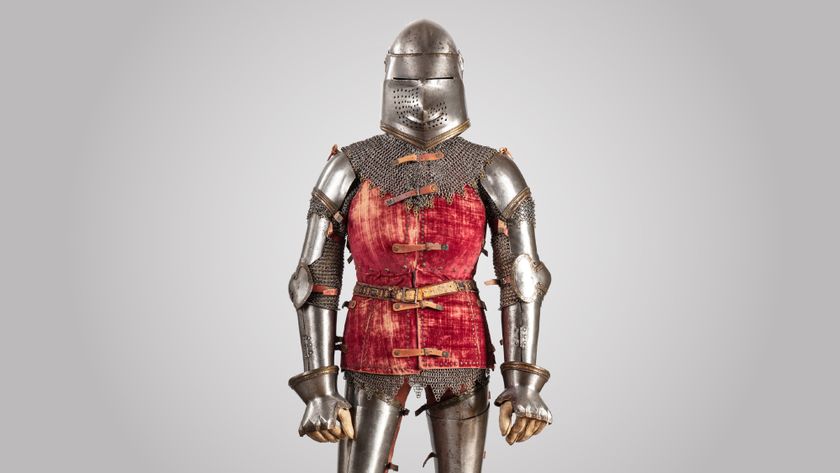Study: Pedophiles Tend to Be Shorter
Pedophilia can be a difficult disease to discuss rationally or explain scientifically, let alone treat, but new research finds that pedophiles tend to be shorter, suggesting the roots of this condition are at least partly biological and may be entirely so.
It was already known that poor development in the womb and just after birth can lead to lower rates of growth, and that shorter people tend to live shorter lives and have a higher risk of heart disease, stroke and nervous system diseases such as schizophrenia.
Now, researchers at the University of Toronto's Centre for Addiction and Mental Health have found a strong statistical link between height and men being attracted to children, which seems to mean something has gone wrong in biological development causing disorder in the brain.
"We find pedophiles are not quite up to biological snuff," said James M. Cantor, lead author of the study.
The effect only goes one way—clearly, the vast majority of people who are shorter in height are not pedophiles. Height should not be thought of as a diagnostic indicator of pedophilia, Cantor said. "It's merely a clue about what causes the phenomenon of pedophilia. It doesn't tell us anything meaningful about shorter men in general," he said.
Biological clues Biology and physiology have been a new focus for explaining pedophilia in the past few years, following decades of sometimes dead-end social ideas about perpetrators' self-esteem and experiences with their own childhood abuse.
"Until recently, research on the origins of pedophilia was stagnant," said Martin Lalumiere, a University of Lethbridge psychologist not involved in the new study. "Very recently, great advances have been made and all point to a non-learned, early cause probably affecting neurodevelopment. Pedophilia is likely a neurodevelopmental disease that people are probably born with."
Sign up for the Live Science daily newsletter now
Get the world’s most fascinating discoveries delivered straight to your inbox.
The biology clues have accumulated: MRIs of pedophiles' brains show they differ in structure from those of non-pedophiles. Pedophiles also more frequently failed grades in school, suffered more head injuries during childhood and are three times more likely to be lefties or ambidextrous (often a sign of early development problems).
The height factor The new study reviewed the files of 1,181 male patients at the Centre for Addiction and Mental Health in Toronto, which provides evaluation services to male patients referred as a result of convictions or for clinical reasons. Half of the sample was known to have committed a sexual offense against one or more victims ages 11 or under, nearly a third had done the same against children ages 12 to 14. (In some cases, a patient's victims were in more than one age category.) About 13 percent of the patients had no record of committing child molestation but had a problem with child pornography or concerns about their own urges.
The patients were categorized into four groups—pedophilic sexual offenders, hebephilic sexual offenders (those attracted primarily to adolescents), teleiophilic sex offenders (attracted to adults) and teleiophilic non-offenders. Various other data was collected from the files, including the patients' heights—self-reported, not measured. Researchers threw out the obviously misreported figures, but say that it would have been better if the files contained height directly measured.
The pedophilic offenders were the shortest of the four groups and the teleiophilic nonoffender controls were the tallest, the authors wrote in Sexual Abuse: A Journal of Research and Treatment. A statistical analysis showed that patient height was significantly associated with whether someone was a pedophile or not.
The average heights of the men in the four categories were compared and pedophiles were found to be about 0.8 inches (2 centimeters) shorter on average than nonoffender controls (adult men attracted to adults). Though small, it turned out to be a statistically significant difference even when controlling for age.
Pedophiles were found to be about 5 feet 9 inches (175.6 centimeters) on average, hebephiles were 5 feet 9 and 3/10 inches (176.1 centimeters) on average, while non-offenders attracted to adults were on average just under 5 feet 10 inches tall (177.7 centimeters).
For comparison in terms of what is considered clinically and statistically significant, the height difference found in this study is nearly twice the effect found among adult male offspring of mothers who smoked about 20 cigarettes or more per day during their pregnancies, compared to adult male offspring of mothers who didn't smoke. Men born into families with alcohol problems also tend to be about 1 centimeter shorter than men born into families without booze troubles.
'Ruling in' biology It looks like pedophiles and hebephiles are "exposed to some condition during childhood or in utero that affected their brain development in a way that increased their risk of developing deviant erotic age-preferences," the authors wrote.
Poor nutrition, exposure to toxins and infections are factors that could play that role, Cantor said.
Some researchers have noticed that child molesters typically have poor relationships with their parents and also suffered physical and sexual abuse, so experts have theorized that there is a social component to pedophilia. Cantor and his colleagues suggest it's all biological and that families unable to provide good conditions for optimal physical growth are the same families in which abuse occurs. Still, social factors could intervene, the authors admit.
The new findings don't so much "rule out" social factors as "rule in" biological factors, Cantor told LiveScience. "No longer can anyone say that social factors are the entire story. That's not feasible any more. If one starts agnostic, the data for nature side is much stronger than data for nurture side. Scientists have only put serious attention into the nature side for the past five years. The nurture side, people have taken for granted for literally 100 years."
Implications for treatment Treatment of pedophiles is challenging, clinicians say. "There is no evidence to suggest that we can turn a pedophile into a non-pedophile," Cantor said.
Most clinicians do a series of interventions called relapse prevention, Cantor said, teaching mainly common-sense techniques to pedophiles to manage their attraction such as avoiding playgrounds and malls where children congregate.
Even if pedophilia is 100 percent caused by biology and pedophiles are not responsible for their sexual orientation, they still are responsible for their criminal behavior. "Even if we entirely explain the interest in children, this does not mean that people are not in control of their behavior," Cantor said. "For instance, the great majority of adult men are interested in adult women, but that doesn't excuse someone who commits rape."
- Video: Sex and the Senses
- A Brief History of Human Sex
- The Sex Quiz: Myths, Taboos and Bizarre Facts
Robin Lloyd was a senior editor at Space.com and Live Science from 2007 to 2009. She holds a B.A. degree in sociology from Smith College and a Ph.D. and M.A. degree in sociology from the University of California at Santa Barbara. She is currently a freelance science writer based in New York City and a contributing editor at Scientific American, as well as an adjunct professor at New York University's Science, Health and Environmental Reporting Program.












